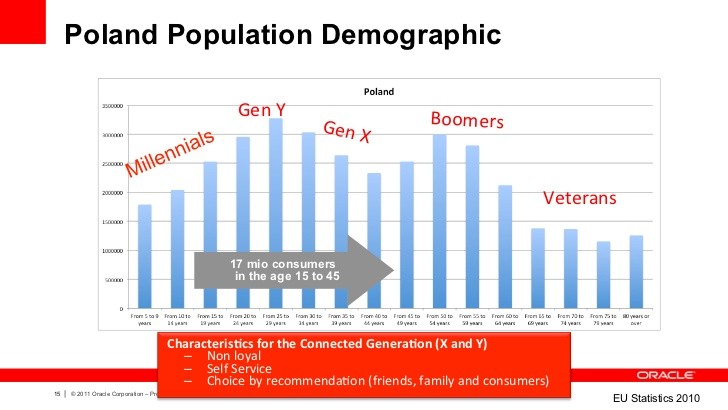Wells Fargo a Social Bank with Potential
Post on: 23 Июнь, 2015 No Comment

Wells Fargo & Co is a diversified financial services company. It provides retail, corporate and commercial banking services through banking stores and offices, the internet and other distribution channels to individuals, businesses and institutions.
Wells Fargo has put customer service among its top business priorities a while ago. It is known for its sustainable & responsible business approach and was recently voted #1 best bank in customer service for the past two years. According to a study made by the AMA (American Marketing Association), top customer service business tops the market all the time (full research here).
But the bank is not only friendly to its customers, it’s also everywhere across the United States and has a very strong sales force:
They are now #1 for mortgages, middle market commercial loans, small business loans and auto financing. On the flip side of things, they are “only” #3 for brokerage services and #4 for wealth management (based on AUM).
Now let’s go dive further into the numbers. Following the first 4 Dividend Stocks Rock Investing Principles , I’ll take a look at Wells Fargo and share a full dividend analysis.
Did you know that the highest dividend yield stocks underperform more “reasonable” yielding stocks? The Hartford Mutual Funds company wrote:
The study found that stocks offering the highest level of dividend payouts have not performed as well as those that pay high, but not the very highest, levels of dividends .”
Wells Fargo dividend yield is definitely not among the highest. With a dividend yield under 3% since mid 2009, you won’t be a happy camper if you are looking for a high dividend yield. However, if you look at both before and after the 2008 crisis, the dividend yield is relatively stable:
It was hovering slightly over 3% before the crisis and it is now quite stable around 2.75% since the end of 2012. The orange line of the graph shows you that while the dividend yield is stable, the payout is consistently increasing if you ignore the crisis (once again). What does this mean? Bigger payouts and higher stock return as the yield remains almost unchanged.
If I had to go blindfolded to pick a stock and have only one metric to look at, I would pick dividend growth. This is the most important metric to me as it is a clear sign of the company’s financial health and its ability to pay me for years to come. Here’s an interesting quote from Saturna Capital:
“Indeed, dividend growth has been a much larger determinant of equity returns in this new era of low benchmark rates and higher levels of uncertainty.”
The WFC dividend growth story shows 21 consecutive years (from 1988 to 2009) of dividend increases. It was so close to becoming a dividend aristocrat and everything was thrown in the trash when the company cut its dividend by 85% to save its balance sheet and some previous liquidity. Good news is, the company quickly got back on their feet and grew back the dividend payout to where it was in only 5 years:
As you can see, patient investors didn’t have to wait that long to see the dividend come back. Now that the US economy is back on track and that the American consumer has less debt and is more inclined to spend, the loan business should do very well in 2015.
I think it’s very important to cross the payout ratio with the dividends paid over at least 5 years to see where the company is going with its dividend policy. It’s a key indicator to know if the payout will continue to increase or if it will reach a plateau at one point in time.

You will notice something very interesting when you do the exercise for the past 10 years. The dividend payout is back to where it was in 2009 but the payout ratio is 20% lower. In other words, the company’s ability to pay dividends is stronger today than it was right before the crisis. Over the past 5 years, the dividend increased by 600% while the payout only increased by 45%. There is definitely some accounting tricks here (as provision for bad debts swung big time during that period), but still, the company is now stronger than ever.
A company that doesn’t have a sound business model won’t be able to sustain consecutive dividend increases over the long haul. On the other hand, businesses which pay dividends and increase them will outperform other stocks:
DSR STOCK METRICS
Due to hectic numbers over the past 5 years, WFC hasn’t shown on our “DSR Radar”. I usually look for smoother trend lines when I look at EPS, Dividends and Revenues growth. It wasn’t the case for Wells Fargo over the past few years, but it doesn’t mean it will be the case for the future. Since the US economy should remain strong and this bank is a leader in many core products, WFC could be an interesting play for the years to come. After all, investing is not about what happened yesterday, it’s about what it will happen tomorrow.
Wells Fargo delivered its Q4 earnings on January 14th. The bank is showing slightly higher than expected EPS and revenues. EPS are at $1.02 (compared to $1.00 last year) while $1.01 was expected. Revenues also beat expectation by 200M$. Wells Fargo Chairman and CEO John Stumpf had the following comments: Wells Fargo had another strong year in 2014, with continued strength in the fundamental drivers of long-term performance: growing customers, loans, deposits and capital. As a result of this performance, we were able to return more capital to our shareholders during the year. Our success is the result of our 265,000 team members remaining focused on meeting the financial needs of our customers in the communities we serve. As the U.S. economy continues to build momentum, I’m optimistic that our diversified business model will continue to benefit all of our stakeholders in 2015.”
As mention in this analysis, WFC benefits from its classic loan business in a growing economy. Wells Fargos great ability to cross sell better than its competitors enable the bank to cut price and be more competitive. They offer better pricing to their clients while making more profits than their competitors by selling more products (with a smaller margin). Its a win-win situation between a bank and customers! You can still compare to JP Morgan Chase analysis on Sure Dividend .
Disclaimer: I do not personally hold WFC shares at the moment of writing this article. Also, WFC is not held in our Dividend Stocks Rock Portfolios .














